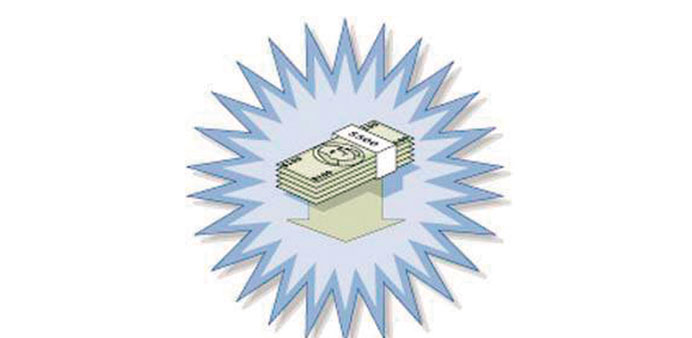By Frank Stocker/Berlin
You have been hoarding money. You purchased real estate. You’ve invested in Swiss francs. All of this you’ve done to stave off the spectre of inflation, because we’ve watched how national banks have been printing money for years, as never before.
And then last week the European Central Bank (ECB) announced that record-low interest rates would be staying low for years to come. In the opinion of the many currency depreciation prophets out there, that means that sooner or later we’re looking at a second 1923 - an era of hyperinflation, and we’ll soon be using billion or trillion euro notes. The problem, however, is this: the presses have been churning out money for five years now, and there’s been no explosion in prices, not even a little. Inflation, experts tell us, simply is not coming.
Or is it? Signs have been multiplying that prices could in the not-too-distant future start going up; that the days of extremely low inflation rates are over; that the value of money could start going south very quickly. So the people who’ve been warning about all this for the past several years would turn out to be right: even if they continue to be totally wrong about the causes.
National bank policies don’t have anything to do with it. The reason lies elsewhere.
For about 30 years, rates of price change in the Western industrial nations have been on a downward spiral. Initially they were held down by the national banks that set themselves clear anti-inflationary goals and maintained a tight grip on money supplies, keeping them deliberately low.
They were thus able to slow depreciation down drastically. The average inflation rate in the industrial nations in the first half of the 1980s was 9%. Twenty years later it had gone down to 2%.
And 20 years later – at the latest – another crucial factor started playing a role: the integration of 1.5bn people into the global labour market. Most of these workers were in China, which became a member of the World Trade Organisation (WTO) in 2001, but workers in other developing countries were also a part of it. The opening up of borders and the liberalisation of world trade made it possible for companies to move production to wherever it was cheapest.
In 2010, Swiss economists tried to calculate in concrete terms just how big the resulting price pressure was. The result: when China gets a 1% share in any given European market, production prices fall by 5%. This figure is particularly high because China exports many labour-intensive goods. For all the developing countries together the figure is on average lower – around 3%. But the impact of this has been that the inflation rate in Germany between 1995 and 2006 fell by about 0.7 percentage points per year, the authors of the Swiss study estimate.
“That phase is now ending,” says Alfred Roelli, chief investment strategist at Pictet, a Swiss asset and wealth management bank. He explains that the deflationary effect of China’s boom is over because salaries in China have climbed dramatically in the past few years. And that will prove a lasting trend, not least because the number of Chinese in the labour market is going down.
The one-child policy introduced nearly 35 years ago is now exacting tribute. When the number of workers dwindles they are in a position to demand higher salaries. That means that salary-intensive sectors like the textile industry have long been moving production to other countries like Bangladesh, Vietnam and Cambodia. China has a population of 1.3bn people, whereas all three of the other countries together only have some 250mn.
But just how would the 30-year phase of sinking inflation rates actually come to an end? If globalisation impacts prices by even as little as 0.7 percentage points, that would put future price rises at 2.7% instead of 2%. Where’s the problem with that?
But inflation is not linear: prices don’t go up parallel just to developments in supply and demand. Inflation happens much more inside heads. “As soon as expectations change, inflation just explodes, prices are raised in anticipation of it,” says Roelli.
It is a kind of domino effect that in turn sets off a spiral of ever-rising prices: I’m raising prices because everybody else is doing it.
This process is not about to start today or tomorrow. It could happen in three, five, even 10 years. And whether inflation rates would be 4, 6 or 8% - nobody knows. But one thing is certain: it would have major consequences for the financial markets. Just as inflation dropped over a 30-year period so too did yields in the bond markets, which means that for three decades investors have been earning handsomely on bonds.
If inflation rates rise sooner or later yields will rise. That would mean the end of an era on the financial market. And it would be all the more dramatic as nearly all professional investors in life insurance, pension funds or investment companies only know this dynamic of the financial system.
Very few financial pros active today were working in the 1970s. So they would all have to learn how to deal with a new investment world. The same holds for small savers and private investors. Longer-term bonds, both government and corporate, would turn out to be money losers. Companies would find it generally harder to get hold of capital, they would have to pay higher interest and higher salaries, profits would shrink along with the prices of their shares.
At the end of the day, gold and real estate might become winners again, even if the reasons will be very different than what most inflation prophets assume now.- Worldcrunch/Die Welt

